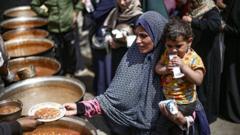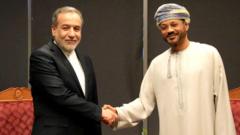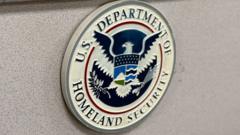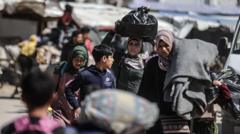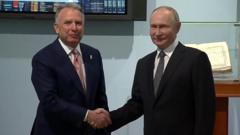Negotiations resurface as tensions escalate over Iran's nuclear aspirations, following the U.S. withdrawal from the Joint Comprehensive Plan of Action (JCPOA) in 2018, which aimed to curtail Iran’s nuclear capabilities and lift economic sanctions in exchange.
### Understanding Iran's Nuclear Dilemma: A U.S. Perspective
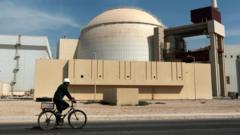
### Understanding Iran's Nuclear Dilemma: A U.S. Perspective
The U.S. and Iran are engaged in indirect negotiations to resolve tensions over Iran's nuclear activities, focusing on the implications and future direction of its program.
The ongoing U.S.-Iran dialogue is framed by historical sanctions, allegations of nuclear proliferation, and regional geopolitical dynamics, particularly concerning Israel's stance.
The U.S. and Iranian officials are in talks in Muscat, Oman, striving to navigate the complex landscape of Iran's nuclear ambitions. The tensions date back to 2018, when former President Donald Trump exited the JCPOA, a multilateral agreement that limited Iran’s nuclear program in favor of economic sanctions meant to pressure Tehran into a new deal. While Iran maintains that its nuclear efforts serve civilian purposes, skepticism looms due to past undisclosed facilities and enhanced uranium enrichment activities.
Since the U.S. withdrawal, Iran has escalated its nuclear activities, including enrichment levels, which have raised concerns among international observers regarding their potential weapons capabilities. The current situation highlights a dichotomy between Iran’s desire for sanctions relief and the U.S.’s insistence on complete dismantlement of nuclear weapons capabilities.
Iran’s Foreign Minister has indicated readiness for a fair agreement, provided it is free from military threats. However, the U.S. demands that Iran not only limit but fully dismantle its nuclear endeavors and missile programs. Israel, an important U.S. ally, has voiced that any agreement must eliminate Iran’s nuclear program entirely, fearing Iran's potential threat to its existence.
Additionally, military intervention remains a consideration. Both the U.S. and Israel possess capabilities to strike key Iranian facilities, yet such action could provoke serious regional instability and military reprisals from Iran. The situation remains precarious, as local alliances and geopolitical dynamics will significantly influence proposed solutions and the likelihood of achieving lasting peace.
As negotiations progress, the U.S. aims to mitigate the perceived threats of nuclear proliferation while balancing regional security interests and diplomatic relations, raising crucial questions about the future of both countries' positions in the international arena.
The U.S. and Iranian officials are in talks in Muscat, Oman, striving to navigate the complex landscape of Iran's nuclear ambitions. The tensions date back to 2018, when former President Donald Trump exited the JCPOA, a multilateral agreement that limited Iran’s nuclear program in favor of economic sanctions meant to pressure Tehran into a new deal. While Iran maintains that its nuclear efforts serve civilian purposes, skepticism looms due to past undisclosed facilities and enhanced uranium enrichment activities.
Since the U.S. withdrawal, Iran has escalated its nuclear activities, including enrichment levels, which have raised concerns among international observers regarding their potential weapons capabilities. The current situation highlights a dichotomy between Iran’s desire for sanctions relief and the U.S.’s insistence on complete dismantlement of nuclear weapons capabilities.
Iran’s Foreign Minister has indicated readiness for a fair agreement, provided it is free from military threats. However, the U.S. demands that Iran not only limit but fully dismantle its nuclear endeavors and missile programs. Israel, an important U.S. ally, has voiced that any agreement must eliminate Iran’s nuclear program entirely, fearing Iran's potential threat to its existence.
Additionally, military intervention remains a consideration. Both the U.S. and Israel possess capabilities to strike key Iranian facilities, yet such action could provoke serious regional instability and military reprisals from Iran. The situation remains precarious, as local alliances and geopolitical dynamics will significantly influence proposed solutions and the likelihood of achieving lasting peace.
As negotiations progress, the U.S. aims to mitigate the perceived threats of nuclear proliferation while balancing regional security interests and diplomatic relations, raising crucial questions about the future of both countries' positions in the international arena.



